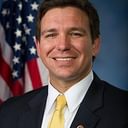
(On January 10, DPIC posted an item about an editorial in the New York Times criticizing the arbitrariness of the death penalty. That editorial relied heavily on the research of Prof. John Donohue (pictured) of Stanford Law School and his study of the Connecticut death penalty. This post looks further at the underlying study.) Prof. Donohue’s research found that out of thousands of murders committed in Connecticut between 1973 and 2007, only one resulted in an execution of the defendant. He concluded that “the state’s record of handling death-eligible cases represents a chaotic and unsound criminal justice policy that serves neither deterrence nor retribution.…At best, the Connecticut system haphazardly singles out a handful for execution from a substantial array of horrible murders,” and that “arbitrariness and discrimination are defining features of the state’s capital punishment regime.”
Out of 4,686 murders committed in the state, Donhue identified 205 death-eligible cases between 1973 − 2007 that resulted in a homicide conviction. One hundred thirty-eight (138) of these were charged with capital murder, and 92 received capital murder convictions. Of the 92 cases, 29 went on to a death sentencing hearing, resulting in 9 death sentences, and one execution (carried out in 2005). Among the findings of the study, Donohue stated:
- The Connecticut death penalty system produces results similar to the Georgia death penalty system struck down by the U.S. Supreme Court in Furman v. Georgia in 1972. In Georgia, 15% of death-eligible murder convictions resulted in death sentences, a rate that was considered freakishly rare and therefore unconstitutional. Connecticut imposes sustained death sentences at a rate of 4.4%, more than two-thirds lower than the pre-Furman Georgia rate.
- There is no meaningful difference between death-eligible murders in which prosecutors pursue the death penalty and those in which prosecutors do not. Donohue evaluated the egregiousness of the 205 death-eligible cases and found that cases in which prosecutors pursued the death penalty were “virtually indistinguishable” according to his measures from cases where the prosecutors did not bring capital charges.
- Connecticut has not limited the death penalty to the “worst of the worst” crimes. Eight of the state’s nine affirmed death sentences were not among the most egregious cases. In addition, only one of the 32 worst death cases resulted in a death penalty conviction.
- The focus of the study, limited to 205-death eligible cases, understates the degree of arbitrariness in the system. Today, nearly 40% of all Connecticut murders go unsolved. If this current rate persists, “then for every murderer who receives a sustained death sentence, at least 15 death-eligible murders would not be punished at all.”
- The Connecticut death penalty system results in disparate racial outcomes. Minority defendants who commit death-eligible murders of white victims are six times more likely to receive a death sentence as minority defendants who commit murders of minorities. Additionally, minority defendants who murder white victims are three times more likely to receive the death penalty as white defendants who murder white victims. Even when controlling for the type of murder, egregiousness or special aggravating factors in a case, minority killers of white victims are still treated more harshly.
- There are dramatically different sentencing standards across the state. For example, death-eligible defendants in Waterbury are sentenced to death at significantly higher rates than are the same defendants elsewhere in the state.
(J. Donohue, “Capital Punishment in Connecticut, 1973 – 2007: A Comprehensive Evaluation from 4686 Murders to One Execution,” Stanford Law School, National Bureau of Economic Research, October 15, 2011; posted by DPIC Jan. 12, 2012). See Arbitrariness and Studies. See also DPIC’s recent report on arbitrariness, “Struck by Lightning” and DPIC’s Year End Report, noting the declining use of the death penalty.



